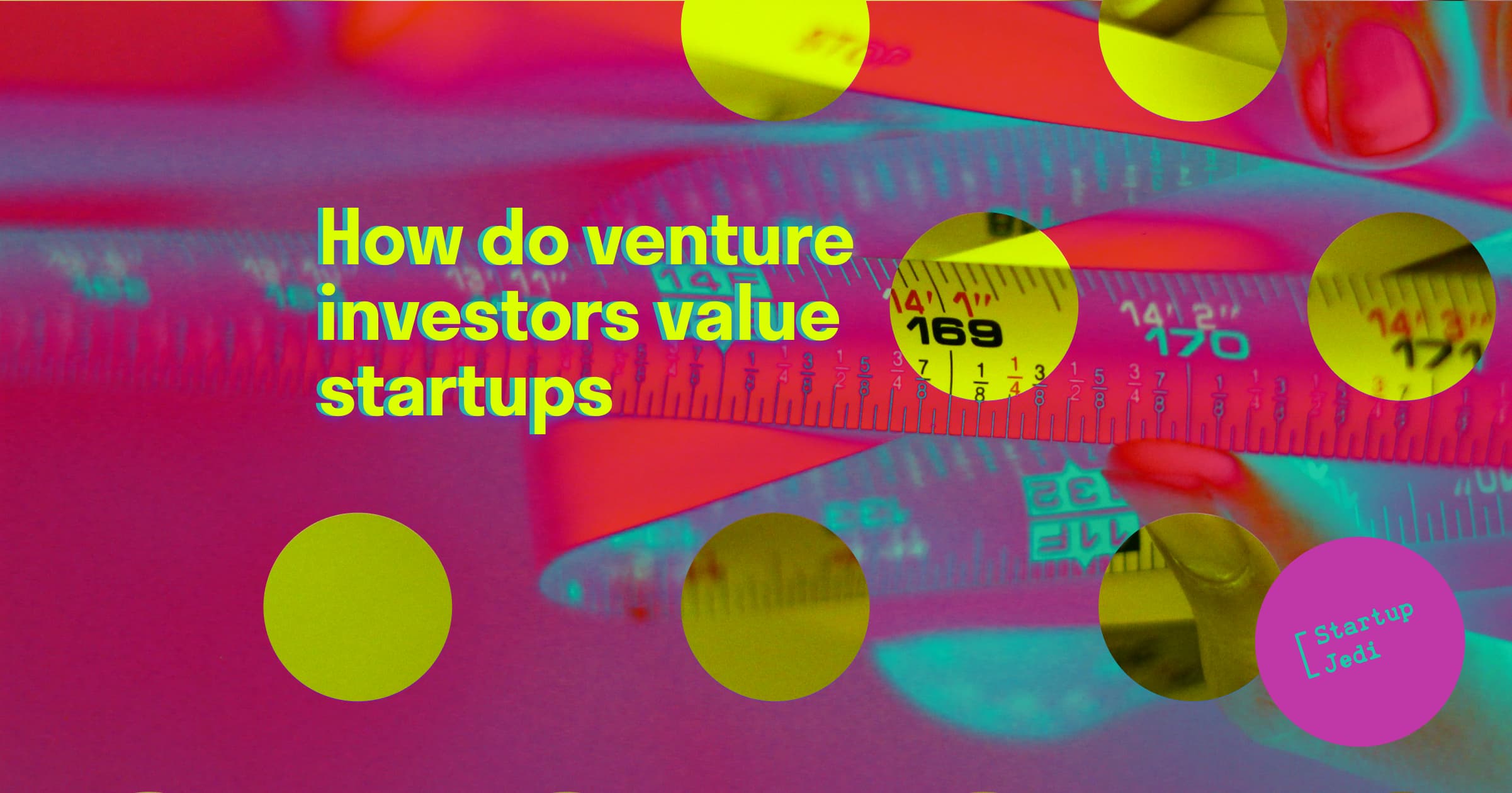
Startup Jedi
We talk to startups and investors, you get the value.
If you plan to attract investments, then most likely one day you will face the necessity of evaluation of your company. A quick reminder — evaluation of a company is a value of a company as a property complex, that can be profitable to shareholders or founders.

Startup Jedi
We talk to startups and investors, you get the value.
About the difference between pre-money and post-money, I have written before, and now the time has come to look at how investors shape eligible startup evaluation.
But before this, let’s determine two basic rules.
First of all, a startup evaluation is different from an evaluation of an ordinary business. The reason lays in fundamental difference: traditional businesses are evaluated by their ability to generate profit based on the operational activity, and startups — by the ability to be profitable to an investor when exit happens (exit from an investment).
Secondly, in the early stages, startup evaluation is nothing more than a conditionality and matter of agreement between founders and investors. The reason is the huge uncertainty. Nobody knows in advance, whether a project will be successful, and if so, then to what extent. By climbing a fundraising ladder step-by-step (pre-seed, seed, Series A and etc.), startup obtains more hard numbers for the evaluation (clients, partnerships, product, and what is more important, financial metrics).

Venture method is the main method of evaluating a startup.
1.An investor starts from defining the company’s development stage (seed, series A, B and so on). To define this, he looks at the product’s development stage, number of clients, team and revenue. Defining the stage sets the frame and base for the further evaluation of a company. For example, a median pre-money project valuation on the seed stage in the USA is about $7.5m and the valuation of such projects quite rarely rises beyond $15m, and the median pre-many of American projects in the VC early-stage (Series A, B) is about $27m, and in each separate case it rarely goes less than $10m. However, exceptions are everywhere.
2. Next, the company’s financial model is analyzed — in particular, the forecast for incoming and outcoming cash flows. The analysis is carried out in terms of basic adequate calculations and forecasts, their ambitiousness and investor’s faith in the team and what they can achieve.
3. For the next step, investor estimates, how much time can pass from the moment of his investment to the moment of receiving the liquidity (company’s acquisition or selling of the shares on public market). This is done on the basis of his personal experience, as well as, on the analysis of the dynamics of development and sales of similar projects.
4. Further, an investor analyzes the multipliers by which companies from similar sectors with similar metrics and at exit are evaluated. Mostly, in the case of startups, such a multiplier is P/S, and that is the ratio of the company’s valuation to its annual revenue. If there are public counterparts, it’s easier to do this — you can see by what factors the market evaluates the company. If there are no public analogues, an analysis of similar venture and M&A deals is carried out.
5. And finally, the investor tries to summarize together all the obtained information — what metrics company wants to achieve at the exit, how much he believes in them, according to what evaluation it will be possible to sell such a company, and what profitability will provide him such an exit with different options for the current evaluation. Another reminder — minimally accepted profitability for the early stages investors is 10x (the more the better, of course). Also, the investor takes into account additional factors, such like:
revenue structure. If the majority of company’s clients are not from a developed region (the US, Canada, the EU), then the investor also includes a country-wise discount (for instance, every American client is worth 1.5–2 Russian clients);
technologies used in the product;
business model reliability;
the size and quality of the team;
availability of strategic partnerships and etc.
6. After exercising this shaman ritual, the investor defines for himself an acceptable diapason of the company’s evaluation and makes the first offer. Everything, that happens after, is pure magic of negotiations. And for a successful outcome, it is very useful for the founders to understand what exactly and how it affects the opinion of the investor.
I hope, that this article shed the light on this process. Good luck!
Subscribe to my Telegram channel about startups and venture invesments Born Global.
Facebook: facebook.com/StartupJedi/
Telegram: t.me/Startup_Jedi
Twitter: twitter.com/startup_jedi
Comments